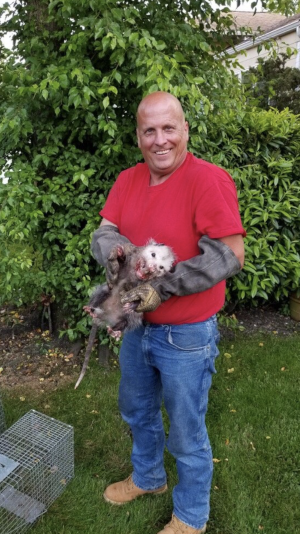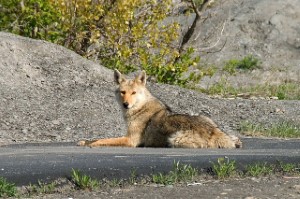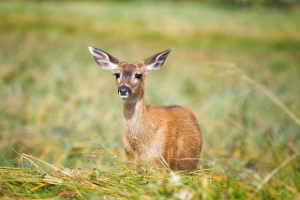WILDLIFE REMOVAL NASSAU COUNTY, NEW YORK
Humane Wildlife Removal Service
New York State Environmental Conservation Law mandates the humane treatment of wild animals. Wildlife control operators from Nassau County Nuisance Wildlife Removal Services act in accordance with this requirement. Our wildlife pest control operators remediate nuisance wildlife control issues using a decision-making approach that takes into account the protection of wildlife populations and habitats, landowner rights, safety, practicality, the humane treatment of wild animals, and ethical, legal, aesthetic, and financial issues.
The Nassau County Wildlife Control program is administered in such a way as to avoid negatively impacting any non-target wildlife. Our wildlife removal professionals know the habits and habitats of the target wildlife. Therefore, they will exercise care in avoiding using wildlife trapping techniques that could potentially impact non-targets such as domestic animals and other wildlife.
Nassau County's Best Wildlife Removal Service
We are a full-service Nassau County wildlife removal and pest control service. Our service is fully licensed and insured in New York and strictly complies with all laws and regulations regarding nuisance wildlife control and pest management. We employ a New York State licensed nuisance wildlife control operator and a licensed pesticide applicator. Nassau County Nuisance Wildlife Removal Services is staffed by pest management professionals who exemplify the attributes of honesty, sincerity, and dedication. Our Nassau County wildlife control service treats people, property, and wildlife respectfully. At Nassau County Nuisance Wildlife Removal Services, we strive to expand our knowledge, skills, and abilities to advance the practice of wildlife management and pest control. We offer our expertise to all inhabitants of Long Island upon request, within the limitations of our familiarity with, ability, and legal authority. We are Nassau County's wildlife removal and pest control provider! Our Nassau County pest control and wildlife removal prices cannot be beaten.
Rapid Response
Nassau County Nuisance Wildlife Removal Services offers same-day and 24-hour emergency Nassau County wildlife removal and pest control services. Our humane wildlife removal and pest management service is fast and effective and offers your family and pets the highest level of safety. We work hard to effectively service every customer's wildlife control issues to protect one of their most important investments, their Nassau County, Long Island residence.
COMPREHENSIVE SOLUTIONS FOR WILDLIFE CONTROL ISSUES
Nassau County Nuisance Wildlife Removal Services is an animal control service specializing in humanely removing wildlife from Nassau County residences and businesses. We are the best nuisance wildlife removal service in Nassau County, New York because we provide a complete solution to your nuisance wildlife control issue. Our wildlife animal control service employs rodent control and wildlife trapping experts. Our nuisance wildlife control operators will conduct a wildlife inspection of your Nassau County home or business to determine what type of animal inhabits it. Are there animals in the attic of your Long Island residence? Are you hearing noises during the day or at night? If noises occur at night, this may be mice in the attic, and if the noises are very loud, this is most probably coming from raccoons in the attic. Other wildlife active in Nassau County attics at night include bats, rats, opossums, and flying squirrels. Noises heard during the day may result from grey squirrels in the attic or birds nesting in the attic.
Nassau County Nuisance Wildlife Removal Services will humanely trap the wildlife that is inhabiting the attic of your Nassau County home or business. We also offer animal entry-point repairs, attic restoration, and sanitization services by licensed and insured Nassau County contractors. As part of our Integrated Wildlife Pest Management Process, we will make recommendations to prevent future wildlife control issues and confrontations with nuisance wildlife, such as raccoons, squirrels, bats, rats, skunks, birds, red foxes, groundhogs, opossums, and mice. Here, our wildlife control experts will be looking for modifications that can be made to prevent future wildlife control issues. For example, the mice in your home may be gaining access to your house through the siding. Unfortunately, there is no shortage of contractors that do subpar work when installing siding on a residence. The flashing that is installed behind the siding often does not come down to the foundation, leaving a gap through which mice can enter a home. We will put you in contact with a licensed Nassau County contractor who specializes in wildlife exclusion and can remediate issues with improperly installed siding. Another example of Integrated Wildlife Management would be birds, squirrels, or raccoons entering your attic via an attic fan. Upon completing the raccoon removal, squirrel trapping, or bird removal, we will install an attic fan cover to avert future encounters with unwelcomed wildlife.
While looking out the window of your Long Island residence and observing wildlife in your yard may be entertaining, they can cause significant problems. Wild animals can damage your garden, lawn, shed, and home. There are several steps that Nassau County, Long Island homeowners can take to prevent conflicts with wildlife. Long Island homes provide the perfect refuge for squirrels, raccoons, opossums, birds, bats, rats, and mice because they are afforded easy access to food, water, and shelter. Once inside a Nassau County dwelling, wildlife is challenging to get rid of, and these animals are vectors of wildlife diseases that can pose serious health risks. Wildlife may be infected with zoonotic diseases and harbor disease-carrying ticks, fleas, and mites.

NASSAU COUNTY WILDLIFE NEWS
Red Fox and Coyote on Long Island
Over the past decade, eastern coyotes have expanded their territory into Long Island. Coyotes are not the only wild canine family members residing on Long Island. The red fox, a canine family member, is native to New York and has inhabited Long Island for as long as humans have. Red foxes are the most widely distributed omnivores in the world and can be found in nearly every county of New York State. The red fox is a nocturnal predator, consuming voles, mice, squirrels, rabbits, and woodchucks. Fox will also eat birds and their eggs, reptiles, amphibians, insects, fruit, berries, and carrion. During daylight hours, they rest in their dens, excavated from the abandoned burrows of smaller animals. Red foxes breed in New York from December to April and maintain lifelong breeding companions. Following a gestation period of about fifty-two days, female foxes give birth to litters that vary in number from one to twelve pups. Both male and female foxes play a significant role in acquiring food for developing fox pups. Young are weaned at twelve weeks of age when they learn to hunt for themselves. The red fox plays a fundamental role in our ecosystem, and it will be interesting to see how their role evolves now that the eastern coyote, the fox's main predator, is moving into the neighborhood. Although the number of foxes may decline, the establishment of coyotes will benefit Long Island, which has an overabundance of white-tailed deer and feral cats. The overpopulation of deer has resulted in an increase in diseases like Lyme Disease. The excessive number of feral cats on Long Island has had a devastating impact on native bird populations. Eastern coyotes prey upon deer fawns and feral cats, which should help to control their populations. Coyotes are omnivorous scavengers like foxes who also consume fruits, vegetables, and roadkill.


MUCH MORE NEWS
Deer Overpopulation Management on Long Island
According to United States government statistics, Suffolk County is inhabited by approximately thirty-six thousand deer. A recent study of deer on Long Island stated that they were initially seen in more wooded North Shore communities such as Cold Spring Harbor, Oyster Bay Cove, Locust Valley, and Laurel Hollow but are now moving south-west and showing up in towns in Nassau County such as Muttontown, Syosset, Bethpage, Westbury, Massapequa, and Levittown. An overpopulation of white-tailed deer has increased deer-related vehicle crashes, tick-borne Lyme disease, and damage to crops and woodlands on Long Island. Suffolk County leads the State of New York for the most deer-related accidents. There were 1,368 deer-related motor vehicle crashes last year in Suffolk County, with four hundred forty occurring in Brookhaven, two hundred eight in Southold, and one hundred eighty-six in Southampton. The Town of Babylon had an animal-related accident that resulted in the death of the operator of the vehicle. Nassau County reported one hundred twenty animal-vehicle collisions, resulting in the injury of nineteen people. The overpopulation of white-tailed deer on Long Island threatens public safety, public health, agriculture, and the environment. Southold is inhabited by six to ten times more deer than the local ecosystem can support. Officials in the Town of Southold have taken steps to enact legislation establishing a deer management program that would reduce and control the deer population.


WILDLIFE CONFLICT PREVENTION TIPS
Garbage Cans - Raccoons, rats, and coyotes will tear open trash bags, so storing them in sealed garbage cans with tightly fitting animal-proof lids is essential. Ideally, garbage cans should be kept in an outdoor storage shed, preventing raccoons and other wildlife from attempting to remove the covers.
Food Storage - Never store food items, including dog food, in a garage that is attached to your residence. Never store food products beneath your kitchen sink. Storing food in the garage or below the kitchen sink could result in a rodent infestation.
Vents - Squirrels, opossums, raccoons, bats, birds, rats, and mice can make their way into your residence through unscreened vents. Attic fan vents, gable vents, dryer vents, and bathroom exhaust vents can all serve as ports of entry for wildlife into Nassau County homes.
Landscaping - Raccoons, squirrels, and opossums often access rooftops via shrubs and tree branches that touch the roof. Pruning trees and shrubs is crucial to keeping wildlife out of the attic. Mowing the lawn regularly eliminates places for rodents to hide, which is an essential component of rodent control in Nassau County.
Window Wells - Should be securely covered to exclude wildlife such as opossums, foxes, raccoons, skunks, coyotes, and feral cats.
Eliminate Cover and Shelter - Remove brush and leaf piles and stack firewood away from your residence. These materials make the perfect refuge for vermin.
Solar Panels - Squirrels and pigeons will build nests under solar panels. So, if you have solar panels on your roof or plan to have them installed, ensure that your solar panel provider also installs solar panel critter guards. Critter guards will exclude wildlife, protecting your solar panels and the roof below them from damage caused by squirrels and pigeons. Installing critter guards on your solar panels will also prevent debris build-up, such as leaves under the panels.
Chimney Caps -These will stop squirrels, raccoons, bats, and birds from making their way down the chimney and into your living space.
Rain Gutters - These are attached to homes via fascia board. When leaves and debris are allowed to accumulate in the gutters, water will not drain out of them. Clogged gutters will result in the fascia board rotting, producing a weak point on the roof. Squirrels will gnaw a hole in the water-damaged fascia board and enter the attic of a Nassau County residence at this point. Therefore, gutters must be routinely cleaned, or gutter guards should be installed.
Sheds and Decks - Should always have skirting to prevent opossums, groundhogs, skunks, raccoons, foxes, coyotes, and feral cats from living beneath them.
Clean Up the Yard - Fruit that has fallen to the ground from fruit trees can become a food source for scavenging wildlife, so it must be picked up promptly. If you have a canine, quickly pick up the dog's excrement because dog feces attracts rats.
Bird Feeders - Keep bird feeders away from your Nassau County residence. Birdseeds attract rodents, including rats, mice, and squirrels.
Do Not Feed Wild Animals - People feed feral cats, squirrels, birds, raccoons, and deer. Feeding wild animals can also attract predators, such as coyotes, foxes, hawks, and falcons. When people sporadically feed wild animals, this can result in aggressive behavior by the wildlife. When people consistently supply wild animals with food, the animals abandon natural food resources and lose the skills needed to acquire them. Feeding wildlife results in those animals losing their natural fear of humans, which may inadvertently put them and the people they encounter in danger.